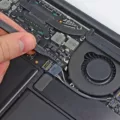
Are you trying to reset a Mac with a Fusion Drive? Whether you want to erase the Fusion Drive or split it into separate drives, this article is for you. Today, I will be showing you how to erase or split a Mac Fusion Drive, and how to reinstall macOS afterwards. Let’s get started!
Understanding the Fusion Drive
What is a Fusion Drive?
The Fusion Drive is a technology from Apple that combines an HDD (hard disk drive) with flash storage. The goal was to combine a large amount of HDD storage with a fast storage flash drive to offer the best of both worlds, providing customers with improved performance. However, Apple offered limited documentation and transparency into the intricacies of how it actually worked.
It was first released in 2012 and was discontinued in new Mac models in 2020. Some iMac and Mac Mini computers have a Fusion Drive. If you have a Mac model that supports a Fusion Drive, and you want to erase the Fusion Drive, read on.
Preparing to Erase the Fusion Drive
It’s important to prepare properly before erasing the Fusion Drive.
Make sure to back up your Mac before erasing or splitting your Fusion Drive to make sure your data is protected. You can use Time Machine to back up all of your files on a USB, and you can also use iCloud to back up photos, videos, and more. See more about backing up your Mac here.
In addition to backing up your Mac, make sure it has sufficient power or is plugged into a power source before you get started.
Erasing the Fusion Drive Using macOS Recovery Mode
Source: Apple.com
If you want to erase the Fusion Drive’s contents, you can do that easily in Recovery Mode with Disk Utility. This will not split the drive, but rather erase its contents entirely. We will talk about splitting the drive in the next section.
To erase the drive with Disk Utility, you’ll need to restart your Mac and press down on Command (⌘) + R while booting it up to enter Recovery Mode. Select Disk Utility and click on Continue. Select the Fusion Drive from the sidebar, click on Erase, and choose the recommended file format. Click on Erase again and wait until the process is completed.
Splitting the Fusion Drive in Terminal
If you want to split the Fusion Drive into separate drives, so they don’t show up as one drive anymore, you’ll need to get a bit more technical and use the Terminal to split and reset the Fusion Drive.
If you have macOS Mojave or a later version, it’s a bit more straightforward, so let’s start with that. You’ll need to once again enter Recovery Mode by restarting your Mac and pressing on Command + R during startup.
From here, navigate to Utilities > Terminal and open the terminal. Type
diskutil resetFusion
into the terminal and click on Return on your keyboard. You will be prompted to confirm; type
Yes
into the terminal and click on Return again. Wait until you see a success message, and then exit the terminal to return to the Utilities menu and skip to the next section of this article to reinstall macOS.
Remember to type the commands exactly as written in this paragraph, using capital letters when specified!
If you have macOS Sierra or earlier, the terminal commands will be a bit different. Instead of diskutil resetFusion, type:
diskutil list
and click on Return. This will bring up a list of your drives.
Look for disk0 and disk1 under IDENTIFIERS. They are sometimes marked with other numbers or identifiers, but it’s important to find the right names, because you will be using them in the next command.
To help you identify them, note that one of them has a small disk size (128 GB or less) while the other has a large disk size (1 TB or more). These are the flash and hard drives that make up your Fusion Drive.
Then, type into the terminal this command:
diskutil cs create Macintosh\ HD disk0 disk1
Then, click on return. If the disks were named differently, include the names you found instead of disk0 disk1.
For example, if they were named disk2 and disk3, you’d use this command:
diskutil cs create Macintosh\ HD disk2 disk3
(If you get a disk unmounting error, type these two commands (press on Return after each command).
diskutil unmountDisk disk0
iskutil unmountDisk disk1
Again, substitute disk0 and disk1 with the correct names of the disks, if they are different from disk0 and disk1.
Then retry the command:
diskutil cs create Macintosh\ HD disk0 disk1
and click on Return.)
Next, type this command and click on Return:
diskutil cs list
Look for “Logical Volume Group” in the results. It will be denoted by “Name: Macintosh HD” on the subsequent line. Right after “Logical Volume Group,” you will see a string of numbers and letters. Copy and paste this string, and use it in the following command (replace STRING with the string of numbers and letters):
diskutil cs createVolume STRING jhfs+ Macintosh\ HD 100%
Then, click on Return. Wait until the operation is successful before quitting the terminal window and returning to the Utilities menu to reinstall macOS.
Reinstalling macOS on the Fusion Drive
Once you’re back in the Utilities window, you can now choose the “Reinstall macOS” option to reinstall macOS and complete the reset of the Fusion Drive into separate drives. This will result in a clean macOS installation, with separate drives instead of a Fusion Drive.
Just click on Reinstall macOS and follow the prompts. You may have to enter your Mac’s password. Choose “Macintosh HD” instead of “Macintosh HD – Data” (if presented with that choice).
It will take a while for macOS to reinstall. Just give it time, and don’t be afraid if your Mac restarts a few times. Don’t close the lid, and make sure it is plugged into a power source.
Troubleshooting Common Issues
Let’s conclude with some Fusion Drive troubleshooting tips.
If you are having difficulty booting into Recovery Mode, shut down your computer and try again. Make sure you are long-pressing on both Command and R at the same time.
If the terminal commands didn’t work, make sure you are using the correct commands for your version of macOS, as explained earlier. Make sure you are typing the commands exactly as I specified and not changing any letters from uppercase to lowercase or vice versa.
Also, ensure that you are using the correct identifiers. As mentioned, it’s not always disk0 and disk1, which is why I specified the additional step of first listing your disks and searching for IDENTIFIERS to find the correct identifiers.
Conclusion:
We hope this guide helped you split the Fusion Drive on your Mac or erase it safely. It’s not that complicated, although if you want to split it on an older macOS version, you do have to be careful to follow the instructions I laid out above to the T, as missing a single letter in the terminal commands could prevent the process from completing successfully.








